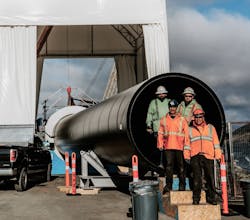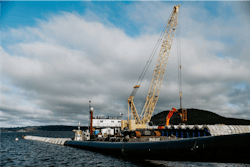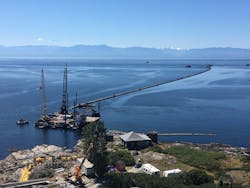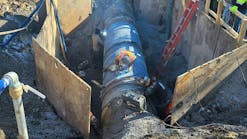“In this salt water and corrosive environment, HDPE is best suited to withstand such severe conditions,” stated Camille George Rubeiz, P.E., F. ASCE, senior director of engineering, Municipal and Industrial Division of the Plastics Pipe Institute, Inc. (PPI). “Plus, for a project such as this, the HDPE pipe has fused joints which provide a leak-free line so that effluent does not exfiltrate along the seven thousand-plus feet of pipe.” PPI is the major trade association representing all segments of the plastic pipe industry.
The reduced weight of HDPE pipe as compared with concrete and steel pipes of the same size category provided significant cost savings for the client. The pipe’s light weight, durability, and flexibility as well as its ability to be fusion welded contributed to reduced installation time and labor.
The SDR21/SDR26 HDPE pipe was extruded at AGRU’s newest facility located in Georgetown, South Carolina. Additionally, 110 pipe joints, ballast weights, fittings, and custom-fabricated assembly pieces were transported to the site to support the ‘float and sink’ installation of the pipe nearly 200 feet under water. The pipe and supporting pieces were transported by flatbed truck with braces, caps, and saddle-style dunnage for the deck provided by AGRU. ISCO Industries (Louisville, KY), the global piping solutions distributor provided the logistics plan and also the qualified technicians to heat fuse the pipe sections and fittings. The installation was completed in less than 30 days.
Originally, the plan called for steel pipe, which was later upgraded to the AGRU XXL HDPE pipe to meet new design requirements. The pipe’s use of HDPE was cited as a primary benefit—providing increased flexibility, durability, and longevity over competing products of the same size category. The move to HDPE also predicated on the creation of specialized fittings such as the Diffuser Pipe Section and the flange coupling adapter that would connect the HDPE pipe to a steel pipe section. Both fittings, developed with support by ISCO, met design requirements and enabled the project to move forward. By sourcing the pipe and all associated fitting components from AGRU, the designer ensured interoperability and improved the outcome of the installation.





